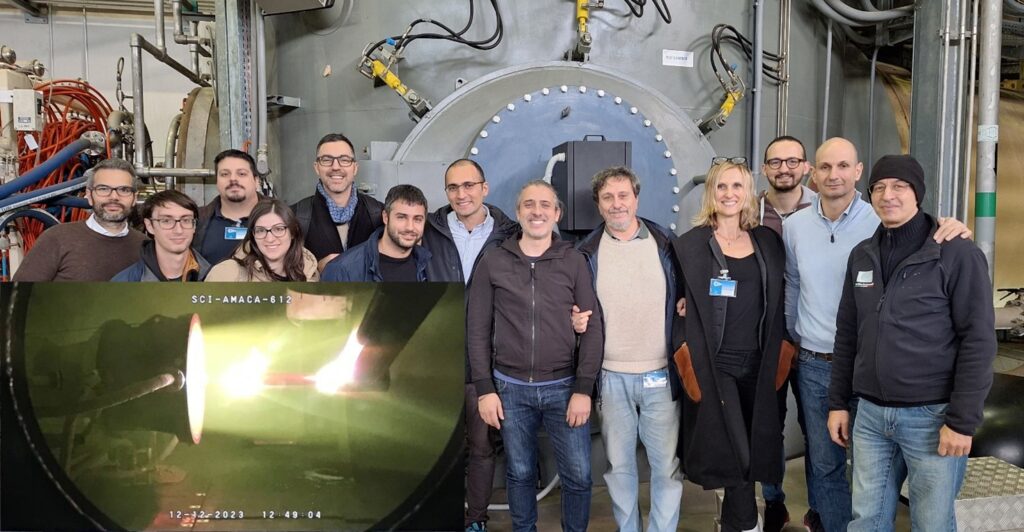Welcome to SIAMS Laboratory
SIAMS is a research laboratory of the Aerospace Science and Technology Department (DAER) of Politecnico di Milano.
The laboratory, using non linear computational approaches on composite structures, focuses on:
- predict structural integrity
- evaluate damage tolerance
- investigate crashwortiness
- implement structural healt monitoring systems
- design morphing structures
We work on composite materials with ceramic and polymeric matrices, aiming to develop efficient methods to simulate damage modes of real-world composite elements, to calibrate constitutive laws, and to integrate them into building block approaches for the design of advanced aerospace applications.
Recent updates
Results of AM3aC2A project for the development of reusable space vehicles
The development of reusable spacecraft is a critical objective for achieving cost-effective space access. The AM3aC2A project (Approccio Multiscala per la Modellazione di Materiali CMC e UHTCMC per Componenti Riutilizzabili per l’Aerospazio) was launched in the year 2021. Its purpose was to establish both experimental and numerical methodologies for the development of ceramic matrix composite hot structures. These structures are designed to perform structural roles at exceptionally high temperatures (1000°C to 2000°C) within the typical conditions encountered during re-entry from space missions, hypersonic flight, and propulsion systems. CMCs and UHTCMCs offer the capability to design stiff and lightweight structures with an improved damage tolerance with respect to bulk ceramics.
Through its funding of AM3aC2A, the Italian Space Agency (ASI) has facilitated the establishment of a comprehensive Italian partnership. This consortium comprises the Department of Aerospace Science and Technology (DAER) at the Politecnico di Milano, serving as the project leader, alongside the Italian Aerospace Research Center (CIRA), the Istituto di Scienza, Tecnologia e Sostenibilità per lo Sviluppo dei Materiali Ceramici (ISSMC) of the National Research Council (CNR), and Petroceramics S.p.A., a leader in research and development for ceramic matrix composites.
In a collaborative effort, the partners have produced, characterized, modeled, and subjected samples and structural elements to testing within a relevant environment. The project has yielded a series of material models that enable the prediction of mechanical properties for structural details featuring complex geometries, even in the presence of defects or damage. Advancements have been achieved in the study of the influence of thermal stresses on material behavior and the delamination of laminates. The project investigated damage tolerance resulting from impacts and oxidation by proposing experimental protocols and assessing the performance of the elements after exposure within CIRA’s plasma wind tunnels, which are recognized as some of the most advanced facilities globally.
The findings unequivocally demonstrate that these materials offer a tangible opportunity to develop lightweight and damage-tolerant aerospace thermal structures. Additionally, they provide the necessary tools for design optimization through modeling and the establishment of allowable design parameters across various dimensional scales. Consequently, AM3aC2A has made substantial strides towards the realization of vehicles capable of undertaking multiple missions safely, eliminating the need for intricate inspection and maintenance procedures.
